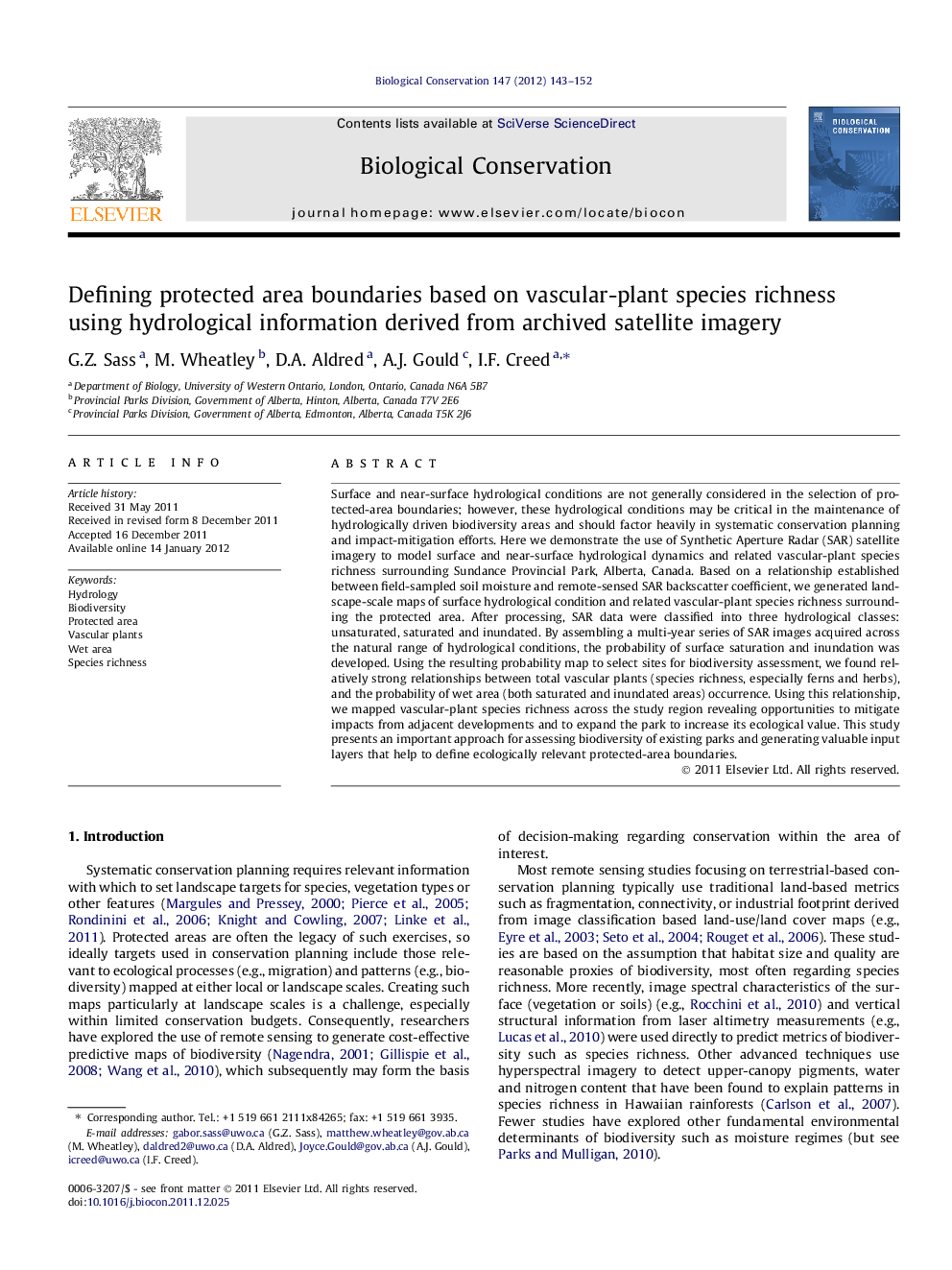| کد مقاله | کد نشریه | سال انتشار | مقاله انگلیسی | نسخه تمام متن |
|---|---|---|---|---|
| 4385292 | 1304531 | 2012 | 10 صفحه PDF | دانلود رایگان |

Surface and near-surface hydrological conditions are not generally considered in the selection of protected-area boundaries; however, these hydrological conditions may be critical in the maintenance of hydrologically driven biodiversity areas and should factor heavily in systematic conservation planning and impact-mitigation efforts. Here we demonstrate the use of Synthetic Aperture Radar (SAR) satellite imagery to model surface and near-surface hydrological dynamics and related vascular-plant species richness surrounding Sundance Provincial Park, Alberta, Canada. Based on a relationship established between field-sampled soil moisture and remote-sensed SAR backscatter coefficient, we generated landscape-scale maps of surface hydrological condition and related vascular-plant species richness surrounding the protected area. After processing, SAR data were classified into three hydrological classes: unsaturated, saturated and inundated. By assembling a multi-year series of SAR images acquired across the natural range of hydrological conditions, the probability of surface saturation and inundation was developed. Using the resulting probability map to select sites for biodiversity assessment, we found relatively strong relationships between total vascular plants (species richness, especially ferns and herbs), and the probability of wet area (both saturated and inundated areas) occurrence. Using this relationship, we mapped vascular-plant species richness across the study region revealing opportunities to mitigate impacts from adjacent developments and to expand the park to increase its ecological value. This study presents an important approach for assessing biodiversity of existing parks and generating valuable input layers that help to define ecologically relevant protected-area boundaries.
► Multi-year satellite imagery is used to map long-term hydrological condition of surface in a forested region.
► Strong relationships found between remotely-sensed hydrological map and measured vascular-plant diversity.
► Regression model used to predict plant diversity across study region from hydrological map.
► Maps of hydrological condition and plant diversity are discussed in the context of systematic conservation planning.
Journal: Biological Conservation - Volume 147, Issue 1, March 2012, Pages 143–152